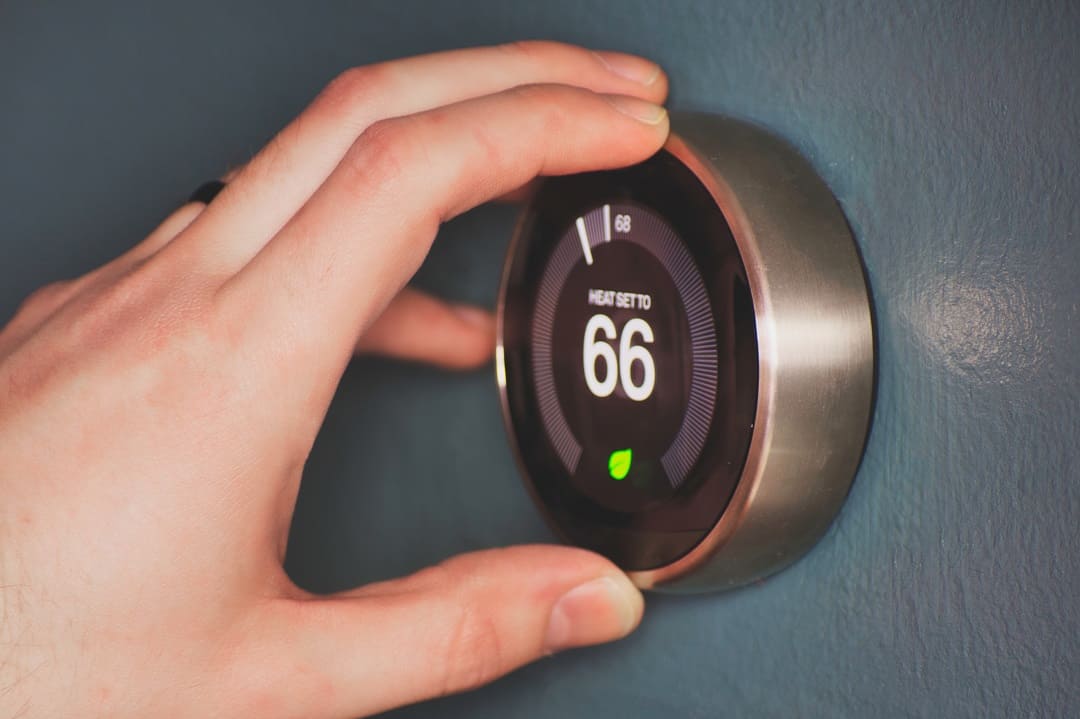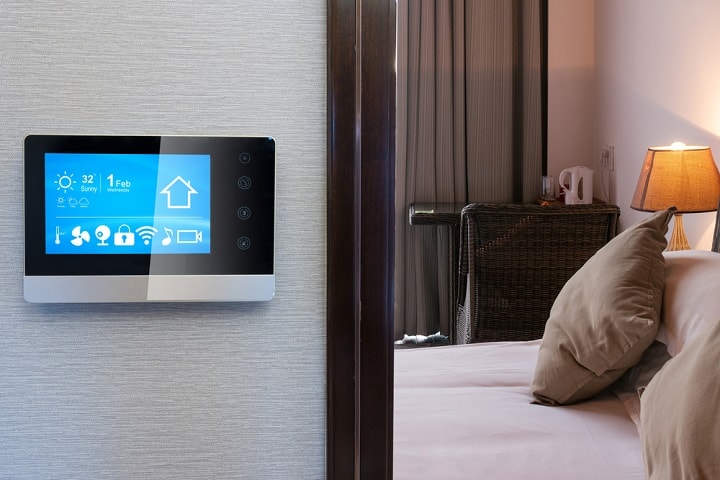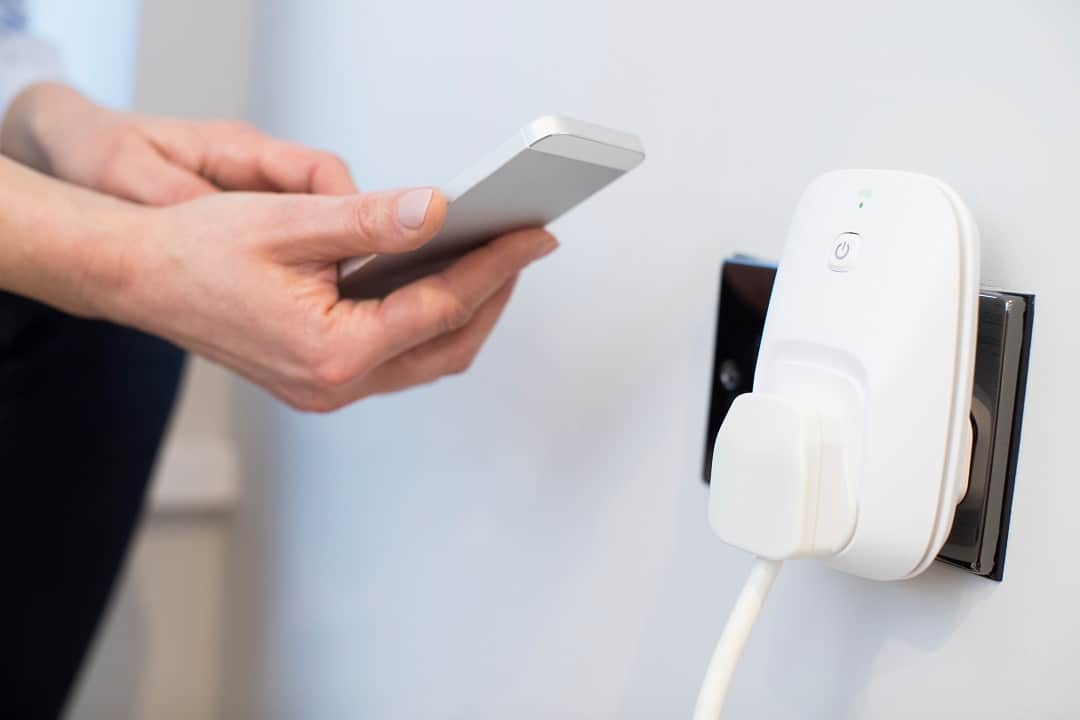Are you ready to step into the future of home climate control? In this post, we will be talking about smart HVAC systems. Gone are the days of fiddling with clunky thermostats and wondering why one room is hotter than the other. Smart HVAC systems are here to revolutionize the way we live, offering unparalleled convenience, efficiency, and comfort. So, whether you’re a tech-savvy homeowner or just dipping your toes into the smart home pool, this post is your guide to understanding how these intelligent systems work and how they can make your life a breeze (literally!).
Understanding Smart HVAC Systems
Ever wonder what makes an HVAC system “smart”? It’s all about connectivity and automation. Smart HVAC systems are actually a bit misleading, since it’s not the HVAC itself that is smart. Instead, the thermostat the the HVAC is controlled by is smart. These thermostats are equipped with advanced technology that allows them to connect to the internet, learn your preferences, and adjust settings automatically for optimal comfort and efficiency. They can be controlled remotely through apps on your smartphone or tablet, making it easy to manage your home’s climate from anywhere. This high-tech approach to heating, cooling, and ventilation is not only convenient but also incredibly useful when it comes to energy use.
The core components of smart HVAC technology include smart thermostats, sensors, and controllers that work together seamlessly. Smart thermostats are the brains of the operation, learning your schedule and adjusting temperatures accordingly. Sensors placed around your home monitor conditions like humidity and occupancy, providing data to the thermostat to make intelligent decisions. Controllers allow all parts of the HVAC system to communicate and operate as one well-oiled machine, ensuring that each room in your home is just the way you like it.
Benefits and Drawbacks of Smart HVAC Systems
One of the biggest perks of a HVAC system hooked to a smart thermostat is energy efficiency, which often means cost savings on your utility bills. These systems are designed to use less energy by adapting to your personal habits and the changing seasons. They can dial down the heat or AC when you’re not home and kick it back into gear in time for your return. This not only saves energy but also puts less strain on the environment. Additionally, many smart thermostats for HVAC systems provide detailed energy usage reports, helping you understand and manage your consumption better.
However, smart HVAC systems come with their own set of potential challenges and considerations. The initial setup and costs can be higher than traditional systems, and there is a learning curve for users to get the most out of their smart features. Compatibility with existing HVAC equipment and the need for a stable internet connection are also important to consider. Plus, as with any connected device, there are security and privacy concerns to keep in mind to ensure your system is protected from potential cyber threats.
FAQ
How does a Smart HVAC system differ from a traditional HVAC system?
A smart HVAC system differs from a traditional HVAC system primarily through its smart thermostat that allows connectivity and automation features. Unlike traditional systems, smart thermostats can connect to the internet, allowing you to control them remotely via smartphones or other devices. This means you can adjust your home’s temperature from anywhere, at any time. Additionally, smart HVAC systems can learn your preferences and schedule, automatically adjusting to save energy while keeping you comfortable. They often provide detailed energy usage reports and maintenance alerts, helping you keep your system running efficiently. These intelligent systems can also integrate with other smart devices in your home, offering a seamless, tech-savvy approach to temperature control.
What are the benefits of installing a Smart HVAC system in my home?
Smart thermostats for HVAC systems offer enhanced comfort, energy efficiency, and convenience in your home. After installing one, your home’s heating and cooling adjust automatically to suit your preferences and schedule, without you needing to fiddle with a thermostat. These systems learn from your habits and tweak the temperature accordingly, which often leads to significant savings on energy bills. Plus, they’re accessible remotely from your smartphone or other devices, so you can make adjustments even when you’re away from home. And let’s not forget, many smart HVAC systems provide maintenance alerts and reports, helping you keep your system in tip-top shape and potentially extending its lifespan.
How do Smart HVAC systems integrate with other smart home devices?
Smart thermostats for HVAC systems seamlessly integrate with other smart home devices through wireless communication technologies like Wi-Fi and Bluetooth. By connecting to a central smart home hub or through individual apps on your smartphone, your smart HVAC can work together with devices like smart vents and even smart window shades to optimize your home’s heating and cooling. For instance, your smart HVAC system can automatically adjust the temperature when it senses that you’ve left the house via your smart door locks or geo-fencing technology. Additionally, you can set up scenarios where your smart lights dim and your HVAC system enters its night time mode, creating not just energy efficiency, but also a cozy atmosphere. The integration is all about creating a cohesive ecosystem that enhances comfort, convenience, and energy savings.
What features should I look for in a Smart HVAC system?
When shopping for a smart thermostat for a HVAC system, you need to be sure that the thermostat works with whatever type of AC system you have – air handler, boiler, or central AC. You should also prioritize features like energy efficiency, compatibility with smart home devices, and programmable settings. Look for systems that can easily integrate with smart home assistants like Amazon Alexa or Google Home, allowing you to control your HVAC with simple voice commands. Programmable settings are a huge plus, enabling you to set schedules for heating and cooling based on your daily routine, further optimizing energy use. Also, consider systems that provide maintenance alerts and usage reports to help you keep your HVAC in top condition while monitoring your energy consumption habits.
Is it difficult to install a smart thermostat for a HVAC system?
Installing a smart thermostat for a HVAC system is not necessarily difficult, but it does require some technical know-how. Typically, if you’re just swapping out a traditional thermostat for a smart one, the process can be quite straightforward and is something a handy DIY homeowner could tackle with some careful instruction. However, if you’re looking at a full HVAC system upgrade to incorporate smart technology or don’t feel handy, it’s a good idea to call in the pros. Professional installation ensures that your system is set up correctly, integrates seamlessly with your home’s existing systems, and functions at peak efficiency. Plus, technicians can provide valuable advice on how to get the most out of your new smart HVAC system. You don’t want to be stuck without a functional HVAC system after a flubbed DIY attempt!
In Summary
And there you have it, folks! Jumping into the world of smart HVAC systems might seem a bit daunting at first, but with the right knowledge, it’s a breeze. Remember, a smart HVAC system isn’t just about keeping your toes toasty or your face cool; it’s about embracing efficiency, convenience, and control right at your fingertips. By choosing the perfect system for your home, you’re not only upgrading your comfort but also taking a step towards a greener, more energy-conscious lifestyle. So, go ahead, make the smart choice for your home, and enjoy the perfect indoor climate year-round. You’ll wonder how you ever lived without it!




